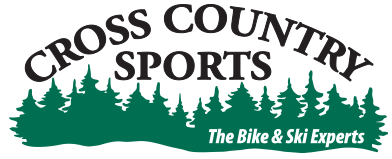Learning to ride a bike is a fantastic skill and a childhood rite of passage. Riding a bike can open up a new world of outdoor activity to a kid. What we discuss below is just one way of learning how to ride a bike – one that focuses on balance first and learning to pedal second. Remember that everyone learns to ride at their own pace and may respond to a different approach more rapidly, but we’ve seen young kids learn quickly with this approach so we thought we’d share.
First things first
The first thing to remember is to keep it fun. Pay attention to what works and adapt your teaching style as you go.
Usually, you can start teaching your kid to ride a bike sometime between the ages of 3 and 6. Keep in mind your child’s physical and mental development and their comfort level with undertaking riding a bike. Don’t force it.
What do you need?
When choosing a bike for your child to ride, don’t use a bike that is too big for your child. Using a bike that they can “grow into later” can make learning to ride challenging or impossible. They need to learn on a bike that fits them. Be sure they can stand over the top tube comfortably with both feet planted on the ground. With the proper fit, they should be able to feel in control of their bike at all times.
Be sure they are outfitted with the proper safety gear. A helmet is a must. You might also consider elbow pads or knee pads. Keep shoelaces, and loose pant legs tucked out of the way.
Where should they learn?
Find a traffic-free and relatively flat area where they can learn how to ride safely. A level driveway, empty parking lot, or quiet park path are all excellent places to learn.
The best method is learning to balance first
The best method we have found for teaching kids how to ride emphasizes learning how to balance first and involving pedals later. Balance bikes such as Striders were made for this, but you can easily modify a regular child’s bike by removing the pedals and crank arms and lowering the seat.
Before they get on the bike, be sure you’ve removed the training wheels, properly inflated the tires, and have lowered the seat to where they can sit and push off on the ground. Training wheels will let your child get accustomed to sitting on the bike but they will not teach them how to balance so we recommend doing without them.
When they’re ready, let your child begin by shuffling – using their feet to help them balance and propel them forward. This will allow them to get a feel for how to balance the bike. Once they seem comfortable, challenge them to coast by lifting their feet off the ground. Once they are comfortable coasting, start showing them how to steer the bike. Start with big, easy turns. You can keep things fun by trying some different games like weaving through cones (or other friendly objects) or place a ruler or other flat object on the ground for them to run over. This teaches them how to scan, read the trail, and steer their bike toward a point.
Adding the pedals
Once your child can balance, coast, and turn – it’s time to add the pedals back on! But it’s still wise to keep the seat lowered so they can reach the ground if they need to stop. Start by teaching them how to locate their pedals. Let them sit on the bike while you hold it steady. With eyes closed, have them locate the pedals with their feet.
You can then teach your kid how to start moving on their own. Have them put the pedals so that their dominant foot is in the 2-o’clock position. Teach your child to press down on the pedal and propel forward just like the scooting motion they already know. You can support them with a hand on their shoulder or the seat of the bike. Be sure to let them get a feel for pedaling and balance without too much assistance.
Practice – and make it fun!
Once they are comfortable with the basic pedal motion and moving forward, they can start practicing turns. Again, you can set up some cones for practice.
For stopping the bike, coach your child to gently press on the brakes. As they gain more balance through practice, they will be able to complete this without wobbling too much. Once they are comfortable, make the practice fun by playing a game like red light-green light.
Once your child is comfortable on the bike you can play other games like follow the leader. Set up cones and practice big sweeping turns or tight weaving. Challenge each other to a balance contest – see who can go the slowest without putting their feet on the ground. Be sure if you are demonstrating turns, stopping, or other bike skills to be a good role model and wear your helmet.
Remember to celebrate the successes and not to sweat the mistakes. Take lots of breaks, move at their pace, and know when to stop if it’s no longer fun. Because that is what it is all about – introducing them to a fun activity that will hopefully be a lifelong past time for them.
